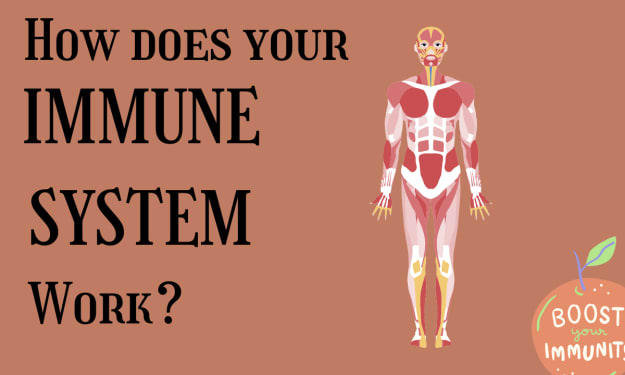Unveiling the Marvels of Human Physiology: Exploring the Intricacies of the Human Body
Human physiology is a testament to the remarkable complexity and resilience of the human body, encompassing the myriad processes and functions that sustain life. From the beating of the heart to the workings of the immune system, human physiology offers a window into the inner workings of our biological machinery. In this exploration, we delve into the fascinating world of human physiology, shedding light on the intricacies of the human body and the interconnected systems that keep us alive.

1. The Cardiovascular System: Pumping Lifeblood Through Our Veins
At the core of human physiology lies the cardiovascular system, a network of blood vessels and organs responsible for circulating oxygen, nutrients, and hormones throughout the body. The heart, a muscular organ located in the chest cavity, serves as the central pump that propels blood through the arteries, veins, and capillaries. Through the process of circulation, the cardiovascular system delivers vital nutrients to tissues, removes waste products, and regulates body temperature, ensuring the optimal functioning of all bodily systems.
2. The Respiratory System: Breathing Life into Our Lungs
Complementing the cardiovascular system is the respiratory system, which facilitates the exchange of oxygen and carbon dioxide between the body and the environment. The lungs, a pair of spongy organs located in the chest cavity, serve as the primary site of gas exchange, allowing oxygen to enter the bloodstream and carbon dioxide to be expelled from the body. Through the process of respiration, the respiratory system ensures the delivery of oxygen to cells and the removal of waste gases, supporting cellular metabolism and energy production.
3. The Digestive System: Fueling Our Bodies with Nutrients
Fueling the body's energy needs is the digestive system, a complex network of organs responsible for breaking down food into smaller molecules that can be absorbed and utilized by the body. Beginning in the mouth with the process of chewing and saliva production, digestion continues in the stomach and small intestine, where enzymes and digestive juices further break down food into nutrients such as carbohydrates, proteins, and fats. Through the process of absorption, nutrients are transported across the intestinal wall and into the bloodstream, where they can be distributed to cells and tissues throughout the body.
4. The Nervous System: Commanding Our Every Move
Driving the body's functions and responses is the nervous system, a complex network of cells and tissues that coordinates sensory perception, motor control, and cognitive processes. At the center of the nervous system is the brain, an intricately organized organ composed of billions of neurons that communicate through electrical and chemical signals. Through the process of neurotransmission, neurons transmit signals across synapses, enabling rapid communication and integration of sensory information, motor commands, and higher cognitive functions.
5. The Endocrine System: Regulating Our Internal Balance
Working in concert with the nervous system is the endocrine system, a network of glands that secrete hormones to regulate various physiological processes and maintain homeostasis. Hormones are chemical messengers that travel through the bloodstream to target cells and tissues, where they exert their effects on metabolism, growth, reproduction, and stress response. Key glands of the endocrine system include the pituitary gland, thyroid gland, adrenal glands, pancreas, and gonads, which secrete hormones such as insulin, cortisol, estrogen, and testosterone to coordinate bodily functions and responses.
6. The Immune System: Defending Our Bodies Against Invaders
Protecting the body from foreign invaders is the immune system, a complex network of cells and tissues that work together to identify and eliminate pathogens, such as bacteria, viruses, and parasites. Key components of the immune system include white blood cells, antibodies, and lymphoid organs such as the thymus, spleen, and lymph nodes. Through the process of immune response, the immune system mounts a coordinated defense against pathogens, recognizing and neutralizing foreign invaders while preserving the body's own tissues and cells.
7. The Musculoskeletal System: Supporting Our Structure and Movement
Providing support, protection, and mobility to the body is the musculoskeletal system, a framework of bones, muscles, and connective tissues that form the body's structural framework. Bones provide rigidity and support, protecting vital organs and serving as attachment sites for muscles, which contract and relax to produce movement. Joints, such as the hinge joints of the knees and elbows, allow for flexibility and range of motion, enabling activities such as walking, running, and grasping.
8. The Renal System: Filtering and Regulating Our Fluid Balance
Maintaining fluid balance and eliminating waste products from the body is the role of the renal system, a network of organs responsible for filtering blood, producing urine, and regulating electrolyte balance. The kidneys, a pair of bean-shaped organs located in the lower back, filter waste products and excess fluids from the bloodstream, producing urine that is excreted from the body through the urinary tract. Through the process of renal function, the renal system helps regulate blood pressure, electrolyte balance,
About the Creator
Mohamed Ali
Mohamed Ali is a passionate writer and researcher with a keen interest in exploring the complexities of human behavior and society through the lens of sociology. With a background in sociology and psychology.






Comments
There are no comments for this story
Be the first to respond and start the conversation.